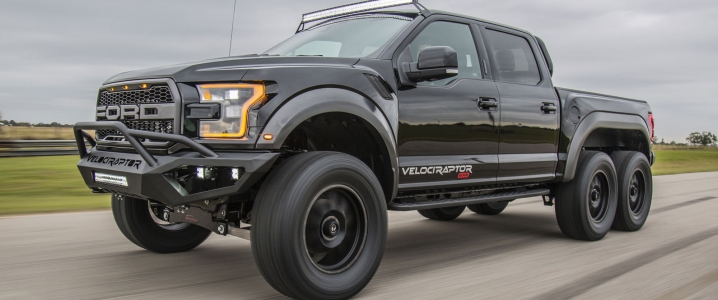While gasoline is up 50 cents per gallon over last year, car shoppers are still leaning toward larger, fuel-sipping vehicles over small, fuel-efficient cars.
Oil analysts predict the price per barrel will continue to rise in months ahead, but market dynamics in new vehicle sales aren’t expected to change course anytime soon. Trucks and SUVs are expected to continue doing quite well.
A recent gasoline price leap in the U.S. national average, up 6 cents to $2.87, is thought to have been driven by the Trump administration’s decision to re-impose sanctions on Iran.
“The Administration’s move combined with the switchover to summer blend, growing global demand and shrinking supply continues to fuel pump prices as we approach the summer driving season,” said Jeanette Casselano, AAA spokesperson. “AAA predicts that the national average may reach $3 a gallon this summer, especially if crude oil prices continue to increase.”
Growing global oil demand in developing countries is expected to continue. Demand has been climbing in key markets such as China.
Brent crude oil prices, considered to be the global benchmark, have been demonstrating the trend. This month, oil prices have reached their highest level in three-and-a-half years.
Turbulence in the Middle East is thought to have raised concerns over the flow of oil in the region. Diminishing supply is having its impact, too, with OPEC just reporting in its Monthly Oil Market Report that oil inventories are tightening up, with global overhang disappearing.
The average vehicle driven in the U.S. around 12,000 miles per year will see a 21 percent increase in year-over-year fuel prices. That will come out to $324 more spent on motor fuel. Two vehicle households will see the expense go up $650 more on fuel expenses, or $54 per month.
While gasoline prices have been on a steady increase in recent months, consumers don’t seem to be too concerned about it yet. Related: The Regulations That Could Push Oil Up To $90
That wasn’t the case during dramatic gasoline and diesel price spikes in 2008. What was then called “fuel volatility” extended sporadically into 2011, which drew more interest among consumers and fleet operators into smaller cars, crossovers, hybrids, electric vehicles, and alternative fuels such as natural gas and propane autogas.
The deeper trend in the U.S., and other major markets such as China and Western Europe, has been greater interest in sport utility vehicles and crossovers. These new models have been the stars of leading auto shows around the world in the past year. But the trend has been in the works for years, with cars only making up less than one-third of all new vehicles sales in the U.S.; and light-duty trucks, including SUVs, making for a much share of major markets such as China.
Fleet operators are also acquiring more vans designed to navigate smoothly through crowded urban streets; pickup trucks made to be more comfortable and car-like for owners using them for business and personal use; and SUVs now becoming common passenger vehicles in law enforcement and other services.
Chrysler is launching a new Jeep Wrangler with a 2.0 turbo engine, more gears in the transmission, and lightweight materials and aerodynamic design to give the SUV better fuel economy. The Jeep Wrangler is typical of what automakers are doing in light-duty truck segments — offering more space, power and utility functions while reducing fuel costs.
Transportation fuel prices have seen a slow and steady increase in recent months, unlike the spikes seen a decade ago. It looks like gasoline and diesel prices will have to go up even further before consumers and fleets switch over to more cars, hybrids, and EVs. Related: $4 Gasoline Could Cripple The U.S. Economy
A recent study by LMC Automotive affirms this market trend that goes back several years. Compound annual growth rate (CAGR) in global SUV sales averaged 12 percent between 2005 and 2017. During that time, total light vehicle sales grew 4 percent and the car segment only grew at a CAGR of 2 percent.
SUVs picked up nearly 20 percentage points of market share in 2017, to 31 percent of global light vehicle sales, according to the LMC Automotive study. Cars saw share fall by 10 percentage points to 43 percent of the total. SUVs, along with crossovers, trucks, and vans, make up the lion’s share of new vehicle sales.
Crossover utility vehicles now offer the comfort and functionality of large sedans with the look and performance of truck-based SUVs. The surge in crossover sales has shifted consumers and fleets away from traditional sedans over to truck side.
By Jon LeSage for Oilprice.com
More Top Reads From Oilprice.com:
- Uncertainty Spikes Following Iraqi Elections
- China Looks To Capitalize On Cheap Iranian Oil
- OPEC Won’t Stop When Oil Hits $80


















